Neoprene is a relatively "young" fabric that was created exclusively for the needs of industry. The material was presented in 1930 by the famous chemist Karozers, an employee of the then largest DuPont enterprise. Unlike most other types of fabric, neoprene is not made from interwoven yarn, but is nothing more than foam rubber.
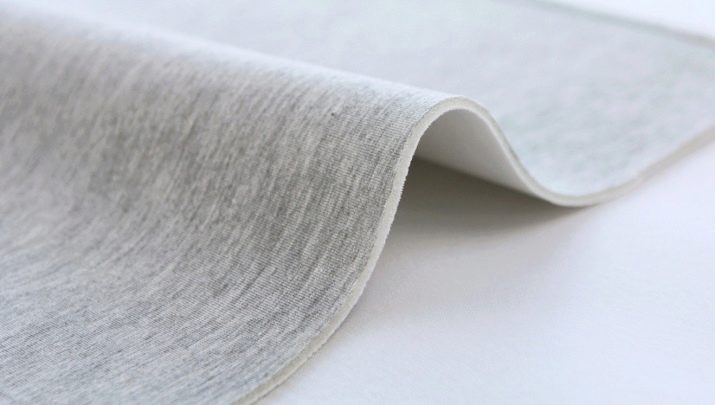
What it is?
Neoprene is a light, flexible, but rather durable fabric that is hygroscopic and resistant to wear. As a raw material for its production, one of the subspecies of synthetic rubber is used - polychloroprene rubber. The structure of the canvas is very different from the usual types of matter, more like a honeycomb due to miniature air bubbles located inside small rubbery cells. Due to this structure, the material is almost impossible to tear, but at the same time it stretches quite well and does not crease at all. There are several varieties of neoprene material.
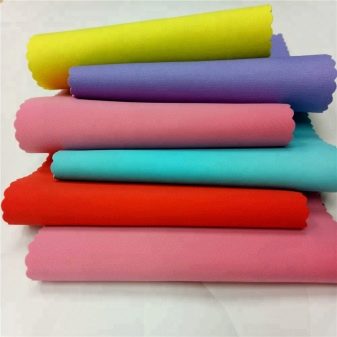
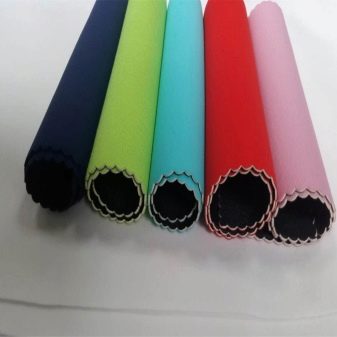
Several species are distinguished depending on the degree of density.
- SOFT - This is a fabric with a minimum density. As a rule, it is used for tailoring sportswear. This canvas is soft, it fits tightly on the body and stretches very well. However, it changes shape over time, begins to deform, and quickly becomes unusable.
- MEDIUM DENSITY - this is an option with average density parameters, its period of use is higher, it holds its shape much better, however, some structure parameters make this material not very pleasant and comfortable to wear.The material is practically not used for the production of sports suits, but only special clothing is made, for example, for lifeguards.
- High densities - Neoprene with maximum density, it is used only for equipment of divers and divers, since under standard conditions it is not possible to move in such things.
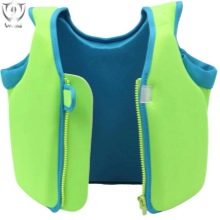
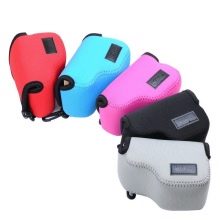
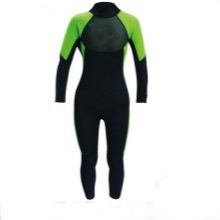
In addition to density, other characteristics are also taken into account when classifying neoprene:
- products with the LS marking are the smoothest material, its distinguishing feature is the sliding coating, so the fabric is often used for the production of ordinary clothes;
- S is a rather flexible, but at the same time dense material intended for special sewing.
- HS- a very tough option;
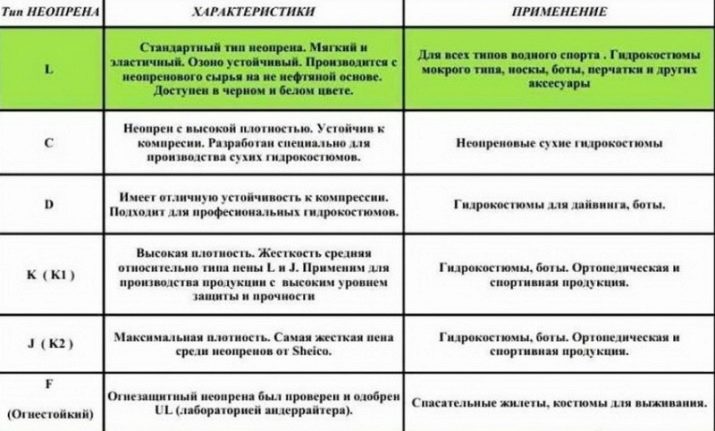
- HHS - a material with minimal elasticity parameters, mainly used to create shoes;
- NF-Neoprene, resistant to high temperatures;
- W is a material with specific properties that has been widely used in medicine.

Structure
The composition of neoprene is due to the characteristics of its production. The canvas is made in several stages. Petrochemical products are taken as feedstock, mini-granules are produced using chloroprene, which become the basis of the material.
As a result of a high-tech process, these very granules combine and form a rather sticky mass. Dye and a foaming composition are poured into it, as a result a thick substance is formed, which is sent to the furnace, intensively heated and, under the influence of heat, it is converted into foam. As a result of heat treatment, long thickened layers of black color are formed, they are cut into thin ones so that each thickness is no more than 1 cm. Such sheets are very unattractive, therefore, to improve their appearance, as well as to enhance the strength characteristics, the layers are glued with other materials (more often total with polyester).

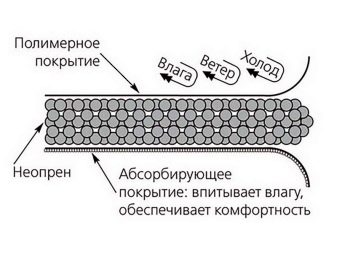
Thanks to this unusual technology, a unique material is obtained, which consists of a large number of cells filled with nitrogen. Such a structure impairs the heat-conducting properties of the web.
Cells can have different shapes.
- Open - at the same time, they visually resemble suckers, which is why the canvas fits the body quite tightly. This type of neoprene is ideal for making wetsuits.
- Closed - in this case, the fabric has a special coating and does not tax the body so tightly, therefore, putting on and taking off such clothes is much easier.
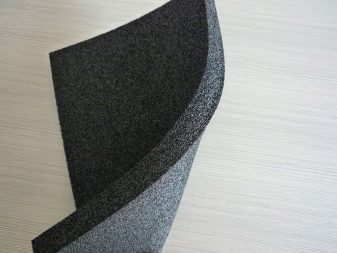
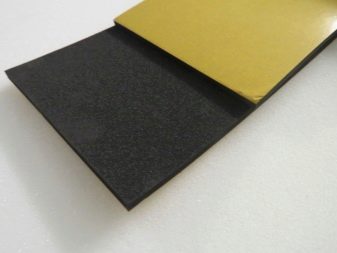
The properties
This new type of material has truly unique user options. Neoprene in the most favorable way affects the human body, since it fixes tissues and organs in one position. The canvas massages and warms, contributing to the activation of blood circulation in the skin. Neoprene clothing tends to accelerate metabolism and remove toxins. Simply put, the effect of such a suit can be compared to being in a bath or sauna. Due to its unique structure, the material does not hinder movement and retains heat. Neoprene has the most exceptional user features:
- the material is completely waterproof, due to this property it is, in most cases, used for the manufacture of wetsuits;
- neoprene retains its physical and technical properties in a wide temperature range - from -60 degrees to +90;
- neoprene is heat resistant, it retains the heat of the human body and does not allow a person in such a suit to freeze;
- the fabric maintains its integrity under the influence of salt solutions and certain types of chemicals, the ingress of oil also does not damage the canvas;
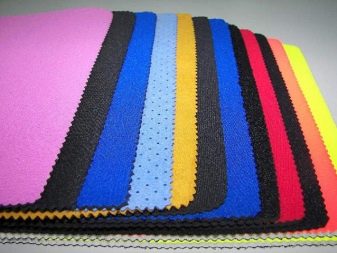
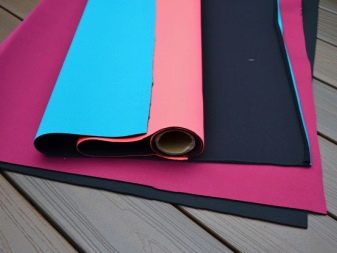
- the material is characterized by increased strength, so the person in it is protected from various cuts and scratches, and in addition, the canvas is able to significantly mitigate any shock and mechanical damage;
- neoprene does not accumulate static electricity inside its fibers;
- characterized by hypoallergenicity;
- neoprene refers to materials of increased fire resistance;
- it is noteworthy that with such strength characteristics, the fabric is quite flexible and soft, so you can freely play sports in clothes made of it - it absolutely does not constrain movements.

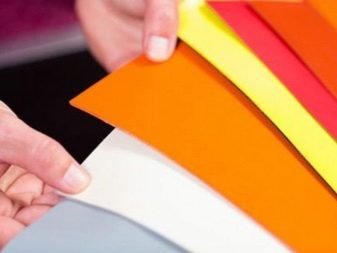
However, nothing ideal has yet been invented, and neoprene is no exception. The fabric also has its drawbacks. Firstly, neoprene does not let air through, so it is impossible to use things sewn from it for daily wear. Moreover, during the day, clothes are allowed to be worn for no more than two hours, otherwise intense sweating begins, which leads to the creation of a "greenhouse effect", as a result, a rash appears and health condition sharply worsens. Secondly, the material requires special care. Neoprene must not be squeezed, ironed and bleaches used during washing. Drying products from this cloth should only be in a well-ventilated place so as to prevent the ingress of ultraviolet radiation. Thirdly, under the influence of acid-base solutions, the product is destroyed.
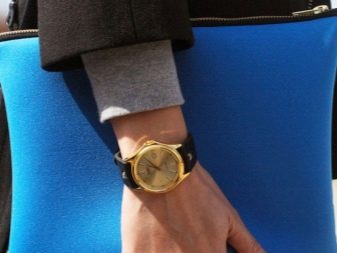
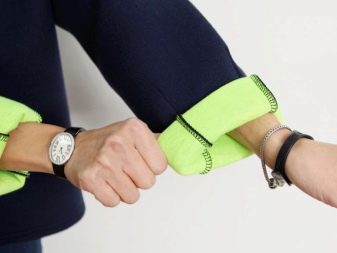
Appointment
The exceptional features of neoprene made it a material suitable for the production of clothing for physical education and sports. Despite its low weight, the tissue slightly massages the body, and thanks to its ability to retain heat, it quickly breaks down fats. Today, in stores you can see stylish trousers, summer shorts, graceful neoprene tops, as well as designer dresses and coats. The unique features of neoprene have long been noted by fashion designers who immediately included this material in the development of the fashion industry. Clothing made from such a canvas is distinguished by its purity of color and clear geometry of lines, due to which it always looks stylish and attractive.


Lightweight neoprene options are used for sewing skirts, dresses and sweatshirts. Such matter has the ability to recreate magnificent styles or bandage details. These products, as a rule, keep their shape perfectly and keep warm, so they are ideal for socks in the cold season. Usually it is used either as the main fabric, or to create decorative ornaments and prints. For example, neoprene things look very stylish in a futuristic style with a wide variety of space patterns. Autumn shoes or slates are often made from neoprene, and most often the material is used only for the sole.
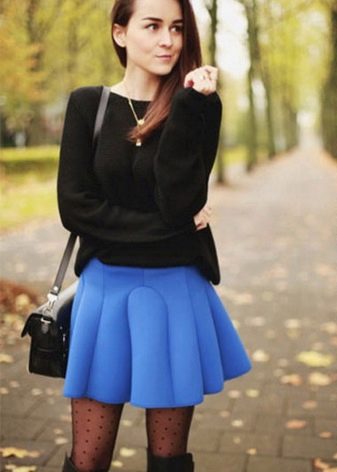

Neoprene travel clothing, tents and protective sleeping bags are very popular. It perfectly retains heat and does not allow moisture to pass, so the products are optimal for trips, hikes and trips in frosty and rainy weather. The same properties make neoprene optimal when sewing shoes for fishermen, hunters and people involved in winter sports. Neoprene items have spread in many other industries:
- medicine - here neoprene is used to create corsets, orthopedic belts, bandages and many other designs;
- construction - exceptional heat and noise insulation properties, as well as high environmental friendliness of neoprene is often used for decorating indoors;
- Cases for laptops, tablets and mobile phones are often made from this material - they not only protect gadgets from damage and moisture, but also emphasize the individual style of their owner;
- diving - since the 50s. of the last century, neoprene became the diver’s most important friend (to this day, no canvas has been created that could surpass neoprene in the field of sewing diving equipment) - it is used for wet-type equipment and a dry plan;
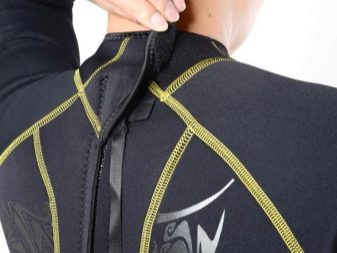
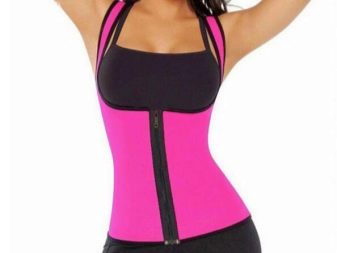
- for fishing and hunting under water, you can use the most common neoprene, but so that its pores are certainly cut off - thanks to this feature, the fabric adheres to the body, which reduces the moisture circulation of such a suit and makes the person much warmer;
- due to its chemical inertness, the fabric is widely used in industry in the production of hoses, as well as gaskets and various types of gaskets, in addition, it is often used as a sound-absorbing material;
- flammability of the composition is much lower than that of rubber, therefore it is often used to make fire-resistant coatings for interior doors, and is also used in the manufacture of equipment for rescuers and firefighters, for example, protective helmets, goggles and gloves are made of it;
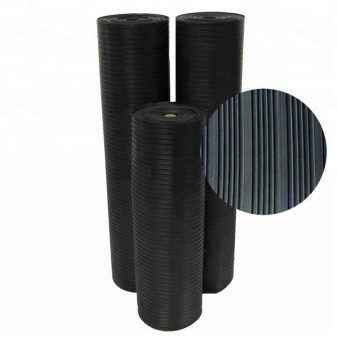
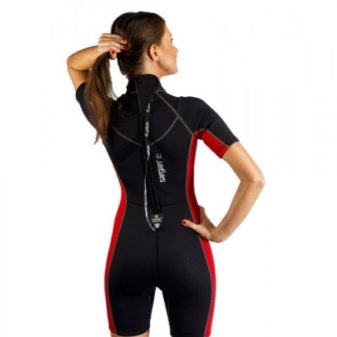
- in the technological field of neoprene they make a sheath for electric wires and cables;
- in the automotive industry, all kinds of o-rings are produced from it, as well as devices designed to damp sounds and vibrations;
- Neoprene has found its application in construction, where it is often attached as a gasket between concrete products and columns;
- the canvas is widely used in equestrian sports, industry and the manufacture of certain types of haberdashery products.
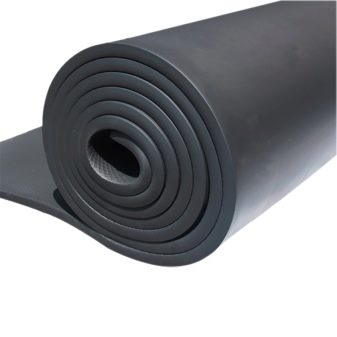
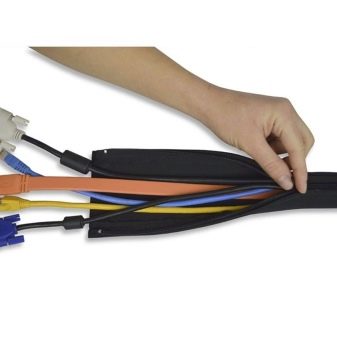
Manufacturers
The creation of neoprene involved in a variety of countries: Japan, France, USA. But as the facts show, nevertheless, the chemical specialist of the American company presented the first material Dupont, therefore, the material itself was first called “duprene” (only later it was renamed neoprene).
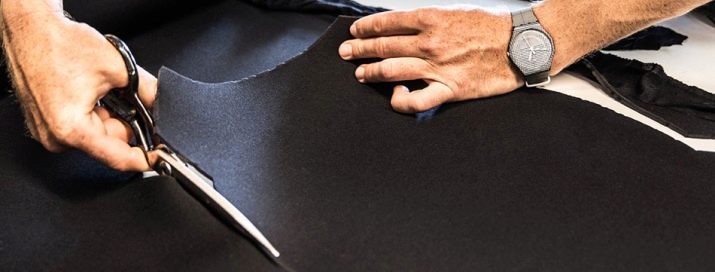
The most popular is neoprene, works under the brand Yamamoto. Products of this brand are characterized by increased breathability, the canvas is made from limestone mined in the mountain ranges of the Land of the Rising Sun. Products made from Japanese neoprene turn out to be very warm and light, however, their cost is much higher than the prices of products of all other brands of neoprene. Canvases by manufacturers such as Daiwabo and Heiwa NJN (National).
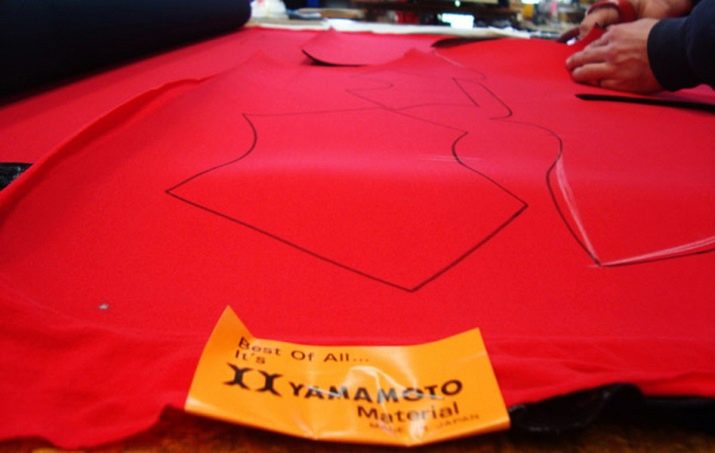
Neoprene was not produced in Russia until 2013, only a few years ago domestic Rufom company presented the very first prototype with a thickness of 5 mm with a nylon coating - this experience was successful and the manufacturer significantly expanded the range by creating a material coated with polyester, viscose, cotton and even leather.

What fabric looks like neoprene?
In its description, neoprene is similar to a rubberized fabric, which has long been used to reliably protect things from water. Typically, the production takes the most various types of matter - cotton, linen or synthetic. The fabrics are impregnated with glue and dried, and when all the dangerous volatile components have evaporated, the rubber is glued to the fibers of the material. Such a coating does not leak moisture at all and tolerates the effects of any household chemicals., the fabric is elastic and durable, however, it has a significant minus that distinguishes it from neoprene - rubberized fabric is quite easy to pierce and cut with sharp objects.
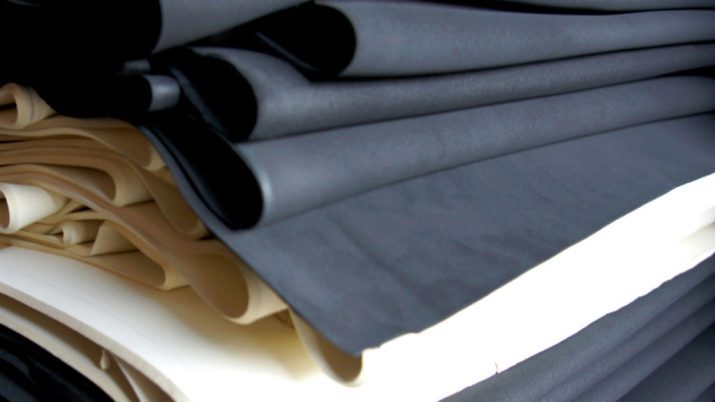
Like neoprene, this fabric is not particularly beautiful, therefore it is most often used as the basis for sewing workwear or lining, however, it often serves as the basis for creating stylish decor elements and accessories design, because due to its smoothness, the fabric can add a twist to even the most plain women's handbag.
See what the next video is about what neoprene is, what clothes are sewn from it.










